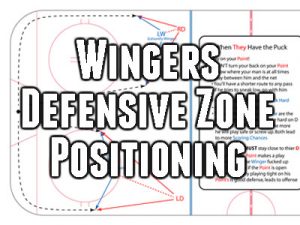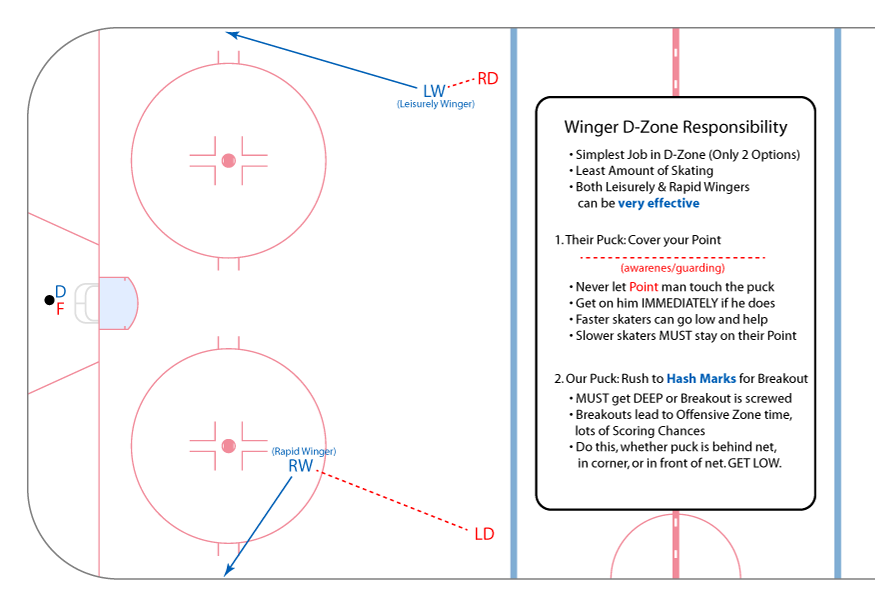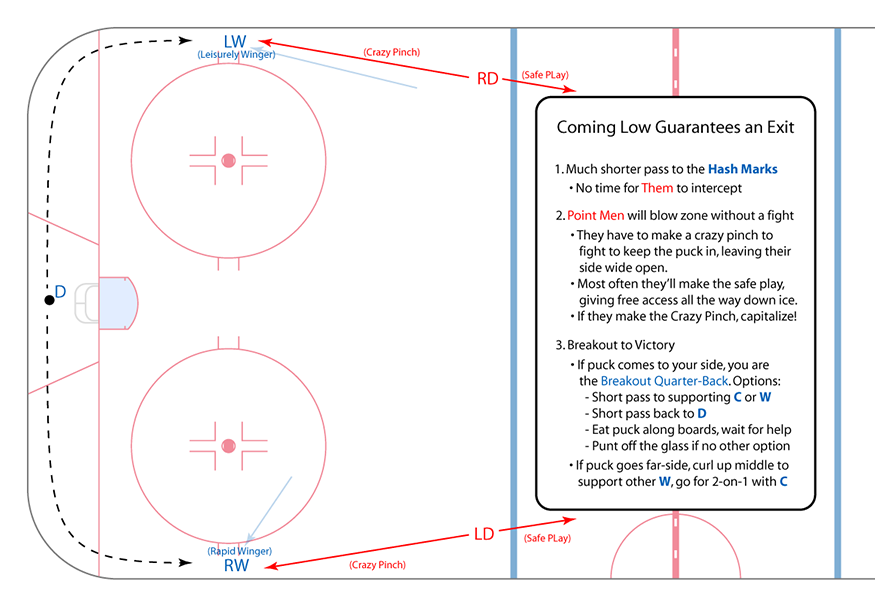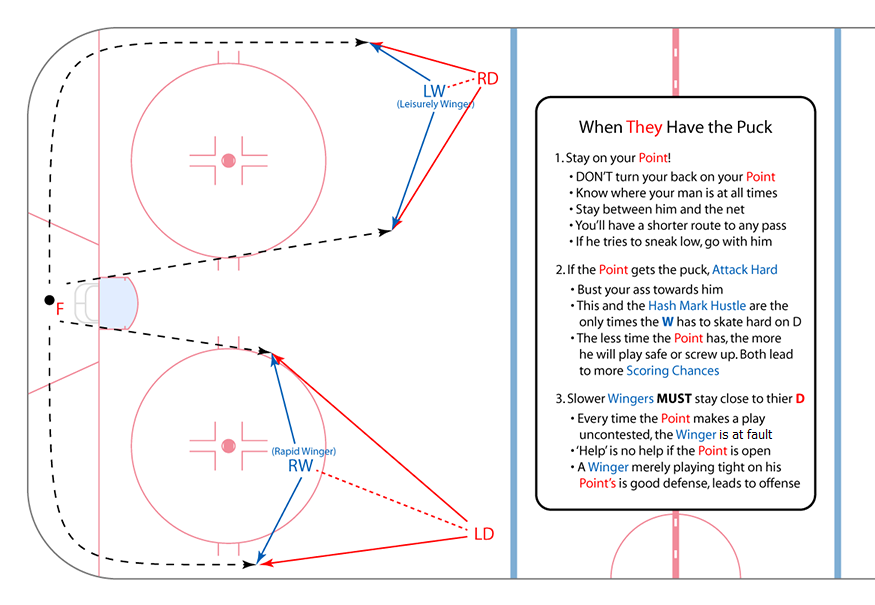 A member of our online hockey forum r/hockeyplayers has put together a number of graphics to help with wingers positioning and responsibilities in the defensive zone. This is a great reference for hockey players.
A member of our online hockey forum r/hockeyplayers has put together a number of graphics to help with wingers positioning and responsibilities in the defensive zone. This is a great reference for hockey players.
More recommended reading
I also recommend an article I wrote on the role of a winger in hockey as well as my 5 hockey breakouts every hockey player should know to familiarize yourself with positioning on a bigger scale.
Great Book for Positioning, Team Play and Systems
If you want more information like this from two NHL coaches I highly recommend Hockey Plays and Strategies. This book goes into great detail and is an amazing resource for coaches, and players who want to better understand how to play.
Winger Defensive Zone Responsibility
Keep in mind these diagrams are all for the winger who has the puck on the strong side. The strong side winger (the side of the ice the puck is on) typically plays near the boards, while the weak side winger will play near middle.
Defensive Zone with Possession
When your team gets possession you need to make yourself an option. You can’t just hang out near the other teams defensemen because then you aren’t really open. If you get the pass, the D will pinch and the puck doesn’t have much of a chance of clearing the zone. It’s your job to help get that puck out while the puck is on your side.
Get Low for a Better Chance of a Breakout
There are times when you can get the puck up high, but for the most part you want to give yourself the best chance of getting the puck out. This means giving yourself a bit more time with the puck by getting a little lower down the boards. You don’t always need to go right to the hash marks, and often you can get a pass in stride while rushing to the boards from the middle (if the puck just went from the other side to your side)
Note: Some coaches prefer wingers higher up on the boards to make the breakout quicker. The reasoning is if the winger takes the pass at the hash mark (which is easier, shorter pass) it can require extra passes to clear the defensive zone, which can result in turnovers. Some coaches want you to take the pass higher, and then eat the puck if the defense pinches and keep battling up the boards.
Too high and Battles Ensue
If you are too high you will either get caught by a defensemen pinching, or get caught from another player beating you to the puck. There are situations when being high works and some coaches prefer it. When everything goes right a quick little chip off the boards, or re-direct to center will lead to an easy breakout, but read the play and don’t be lazy!

When the Other Team Has Possession
When the other team has the point your job is to make sure the defensemen doesn’t get the puck, and if they do then your job is to make sure they don’t get a shot (or a good shot) on net. Slower wingers should stick closer to their assignment (the defencemen) while faster wingers can get lower and help out sometimes down low
Wingers Positioning in the Defensive Zone Video
This is a great video from Kevin Muller from Hockey Share breaking down the roles explained above. He also touches on the weak side winger, and not only where you should be but what you should be doing while you are there.
Key Principles when in the Defensive Zone
- Head on a swivel – Knowing where your check is at all times is important. Keeping tabs on your team mates check is important as well for communication. The last thing you want to happen is your point man to sneak in down low and get a quality shot on net while you are left guarding the blue line
- Good Defensive Position – When the other team has the puck it’s important to maintain good defensive position. This usually means you are between the guy with the puck (if he’s your check), and your net. Of course being between your check and the net at all times never hurts either, as then if your check ends up with the puck it isn’t hard to get into good defensive position.
-

Control the play – When you (or your team) gets the puck it’s important to control the play. Don’t just throw the puck away. Control the puck, get your head up, and make a smart play. You can make faster decisions if you read the play before you get the puck.
- Stick on Puck, Body on Body – When squaring off against your check (when he has the puck) it can be easy to get mixed up, deked out, or used as a screen, but not if you follow this principle. When trying to check the man with the puck, stay between him and the net, square your body up to his, and keep your stick blade lined up to the puck. This will prevent him from walking around you, and “stick on puck” helps stop shots and passes.
Thanks to Coach Chic for suggesting to add some of the principles above. If you want to learn more about playing wing and positioning I recommend an article I wrote on the role of a winger in hockey as well as 5 hockey breakouts every hockey player should know.



